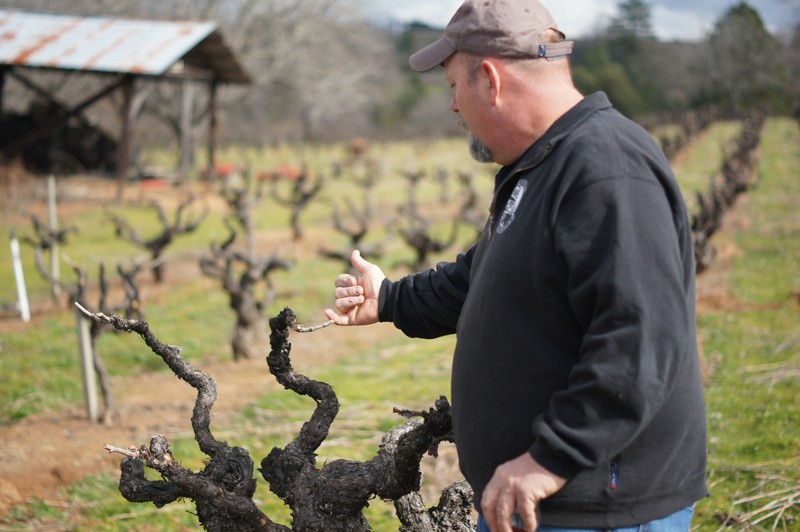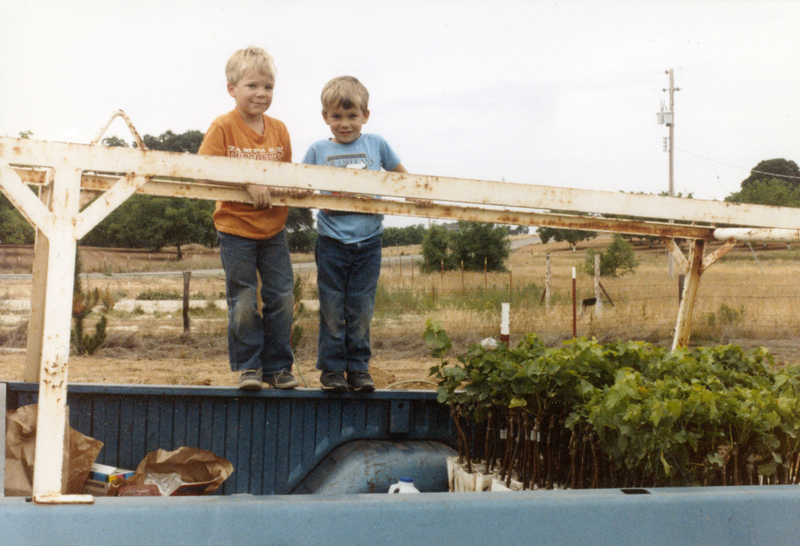Amador County Wineries, The History
Over 150 Years of Winemaking
Amador County boasts a remarkable wine history that’s deeply intertwined with the California Gold Rush. Located in Northern California, about 100 miles east of San Francisco and 40 miles east of Sacramento in the Sierra foothills, Amador County, established in 1869, sits at elevations ranging from 250’ to 9,000’. As you can tell, that’s quite the spread! And here, in Shenandoah Valley, the Noceto estate sits at the perfect medium of around 1400’.
But where did the story of Amador County wine begin?
Back in 1848, fortune seekers began to flock to the rugged western foothills of the Sierra Nevada in search of gold. However, the real winners of the Gold Rush were not the miners. They were those who set up shop and emptied the miners wallets.
Many of these early prospectors were European. They brought along a taste for wine and perhaps even some viticultural knowledge, and small wineries began to spring up to quench their thirst. Moreover, the development of transportation routes, including California’s first railroad, which was built in 1856 and traveled from Sacramento to Folsom, gave Amador and neighboring counties an advantage in getting their wines to larger cities. By the late 1800s, the area known as the Mother Lode had more than 100 wineries, surpassing any other region in California at the time.
Remarkably, some of the vineyards planted during this Gold Rush era have survived to this day. Among these is the Original Grandpère Vineyard, planted in 1869, which proudly holds the title of the oldest documented producing Zinfandel vineyard in California. That historic vineyard is where we source the grapes for our beautiful OGP Zinfandel.

Winemaker Rusty Folena visiting the Original Grandpere Vineyard.
Amador County is indeed renowned for its Heritage Zinfandel vines, which have been dry-farmed and cultivated for over 150 years. These deeply rooted, head-trained vines yield tiny crops of small-berried grapes, producing the intensely flavored Zinfandels for which Amador is celebrated.
The survival of the Original Grandpère Vineyard is especially remarkable when you consider the full history of California winemaking and Amador County wineries, especially in the decades following the Gold Rush. The decline of gold mining at the end of the 19th century, followed by the devastation of Prohibition in 1920, brought this frontier wine region to a standstill. Many wineries lay dormant for years, and when the last surviving gold mines closed in 1942, the economic future of Amador seemed uncertain.
The Resurgence of wine in the Mother Lode
A new chapter began in the 1960s and 1970s. As vineyard land prices in Napa and Sonoma rose, a new generation of pioneers, drawn by Amador County’s rolling, sun-drenched hillsides, warm daytime temperatures, and unique volcanic, decomposed granite soils, began to rediscover the region. These conditions were (and still are) ideal for producing top-quality wine grapes. Hot days, cold nights, and mineral-rich soil are the perfect recipe for distinctive and compelling wines.
Moreover, the presence of extremely old vines, which had never been ripped up even after wineries closed during Prohibition due to low land costs, was a significant draw. Soon, Amador County’s robustly flavored wines, especially Zinfandel, began to attract the attention of wine lovers, and the historic Sierra Foothills wine region was reborn. Today, where gold once reigned, over fifty wineries produce superb wines that have earned Amador County international acclaim.
It was during this resurgence, in September 1984, that our own story with Amador County began. At the time, Suzy and Jim Gullett had no intention of starting a winery; Jim was busy with his career, and their sons were very young. They were simply looking for a country property, a getaway where we could eventually retire and perhaps plant a small vineyard. They explored winery properties in Napa, Sonoma, Mendocino, and then Amador County. They fell in love with Amador’s golden rolling hills and its small-town charm, and Jim knew of its long history as a great grape-growing region.
Initially, they were drawn to a secluded piece of land high above the Shenandoah Valley. However, Suzy’s father wisely advised us to consider a property with commercial potential, the very one where their Winery Tasting Room now stands at 11011 Shenandoah Road. After much discussion, they decided to take the leap. With the purchase of that parcel, Vino Noceto was born. At the time, it was only one of ten Amador County wineries.

Vino Noceto's estate was first planted in 1987. Here are Suzy and Jim Gullett's sons preparing the first batch of vines.
The grape varietals of Amador County
While Zinfandel remains Amador’s signature variety, known for being fuller, riper, and earthier in the Shenandoah Valley AVA and fruitier in the Fiddletown AVA, Amador County is also home to nearly 30 distinct varietals. Staying true to the adventurous spirit of this gold rush region, winemakers have found incredible success with Italian, Rhone, and Iberian varietals, including Barbera, Sangiovese, Syrah, Grenache, Vermentino, and Tempranillo.
As you may know, Jim and Suzy Gullett of Vino Noceto settled on Sangiovese as their champion grape. You can read more about Sangiovese here.
Amador County’s unique terroir plays a crucial role in the character of its wines. Over millions of years, the granite rocks of the Sierras decomposed, filling the lowlands with volcanic Sierra Series soils, primarily sandy clay loam derived from decomposed granite. These well-drained and moderately dense soils effectively retain the region’s rainfall, often allowing growers to dry-farm their vineyards. The hot summer days are balanced by cool mountain air that descends into the valleys in the evenings, creating a significant temperature fluctuation of 30 degrees or more. This rapid cooling helps the grapes retain the acidity essential for balanced wines. The soils, Shenandoah Valley elevations (ranging from 1,000 to 3,000 feet, with higher elevations in Fiddletown AVA), and weather conditions stress the vines, a characteristic widely accepted as desirable for complex, balanced wines. Amador County wineries’ warm climate, high solar radiance, and low humidity promote the full ripening of the grapes.
In other words, it’s perfect for Tuscany’s hero grape, Sangiovese.
At Vino Noceto, we are proud to be part of Amador County’s ongoing wine story. It’s a story that began with the excitement of the Gold Rush and continues today with a dedication to quality and a spirit of innovation. From our initial 110 cases to our current production of almost 10,000 cases annually, including a dozen different Sangioveses, we are deeply grateful for the support we’ve received over our decades in the wine business. Just like the early pioneers of Amador wine, we continue to be inspired by this special land and its potential. We invite you to come visit us in the Shenandoah Valley. Experience the rich history and vibrance of Amador County wines for yourself!
For a list of some of the best wineries in Amador County, we recommend visiting the Amador Vintners Association website. This non-profit organization masterminds Amador County Wineries’ greatest events, from Big Crush to Behind the Cellar Door.

Vino Noceto
For more information:
vino@noceto.com
209.245.6556 x2 phone
209.286.7840 text
Tasting Room Hours:
Weekdays | 11am to 4pm
Weekends | 11am to 5pm
Address:
11011 Shenandoah Rd
Plymouth, CA 95669
Supervised children and friendly dogs on-leash are welcome!
